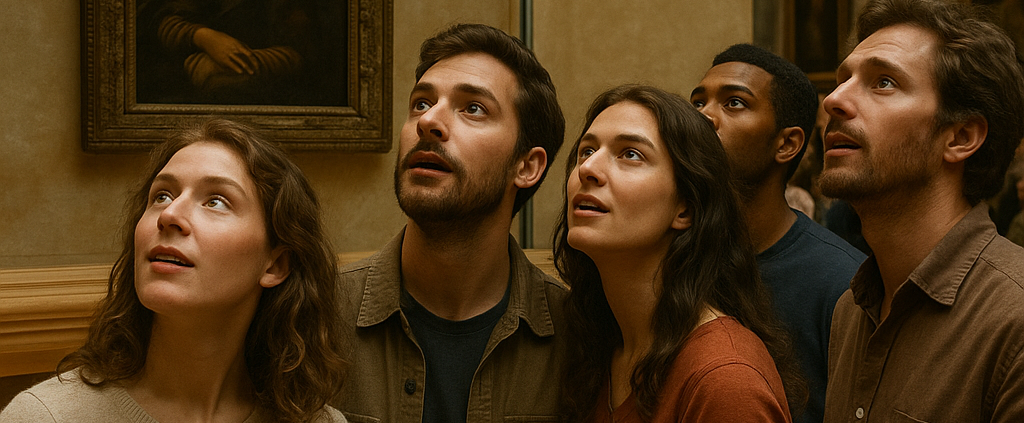Art and the brain: A pioneering study that invites us to rethink museum mediation
By Sabetrend, specialist in cultural merchandise and emotional mediation tools for museums and cultural institutions
As museums continue to redefine their role in a society increasingly focused on well-being, a groundbreaking scientific study conducted at the Museum of Fine Arts in Caen, France, places art once again at the heart of human health.
The project, entitled ABC – Art, Well-being, Brain, opens new doors not only in the medical field but also in the way cultural professionals design and deliver visitor experiences.
At Sabetrend, we see this initiative as a powerful call to develop more emotional, human-centered, and lasting forms of mediation, through thoughtfully designed objects that connect deeply with visitors.
A first of its kind: when science steps into the museum
The ABC project is the result of a collaboration between the Museum of Fine Arts of Caen, the Blood and Brain Institute, the Caen University Hospital, and five research labs from the University of Caen Normandy.
Its mission: to scientifically measure, for the first time, the neurological and physiological effects of art on the human brain, not in artificial lab settings, but on-site, within the museum environment.
Participants are equipped with advanced portable technology—including NIS headsets that monitor blood flow in the brain, heart rate sensors, and eye-tracking devices—as they explore a selection of masterpieces.
These tools allow researchers to capture emotional and cognitive responses in real time, triggered by direct engagement with artworks.
Clinical rigor, authentic emotions
Much like a clinical trial, the study is designed with methodological precision.
It involves 200 healthy volunteers between the ages of 18 and 65 who haven’t visited the museum in at least ten years.
They’re divided into three groups: one control group and two others who visit the museum, with or without cultural mediation.
Over the course of 2.5 hours, participants view portraits, landscapes, and genre scenes—alone or accompanied by a stranger—to examine the potential for shared emotional synchronization.
Can art create a form of emotional resonance between individuals? Can it become a shared language of empathy?
What if art became a form of medicine?
This research has the potential to fundamentally shift how we view museums in society.
Cities like Montreal and Montpellier are already prescribing museum visits as part of treatment plans for anxiety, depression, and stress.
If the ABC study confirms the measurable benefits of art on brain activity and emotional well-being, we could see a revolution in the way cultural spaces contribute to public health.
Museums may become recognized not only as places of learning and beauty but also as spaces for healing and emotional care.
Sabetrend: objects that evoke, accompany, and endure
At Sabetrend, we believe that the power of art doesn’t end when the visitor leaves the gallery.
A well-designed object can extend the emotional experience, turning it into memory, inspiration, or even connection.
Illustrated notebooks, textiles, postcards, games—our designs don’t just inform; they evoke, comfort, and transform.
This new vision of cultural mediation—more sensory, emotional, and experiential—is at the core of our mission:
to create meaningful, long-lasting objects that continue to resonate with visitors long after their museum experience ends.
A project worth following
The ABC project will soon be accompanied by a dedicated website, podcasts, and video content to share insights with the public and the cultural community.
The first results are expected in autumn 2025, and they may redefine the future of how neuroscience, art, and museum engagement intersect.
At Sabetrend, we are excited to support this evolution toward a more human and meaningful form of mediation.
We are ready to collaborate with museums and institutions eager to provide memorable, emotionally rich visitor experiences through beautifully crafted, thoughtful objects.
📩 Want to talk? Let’s co-create the next generation of cultural mediation together.



